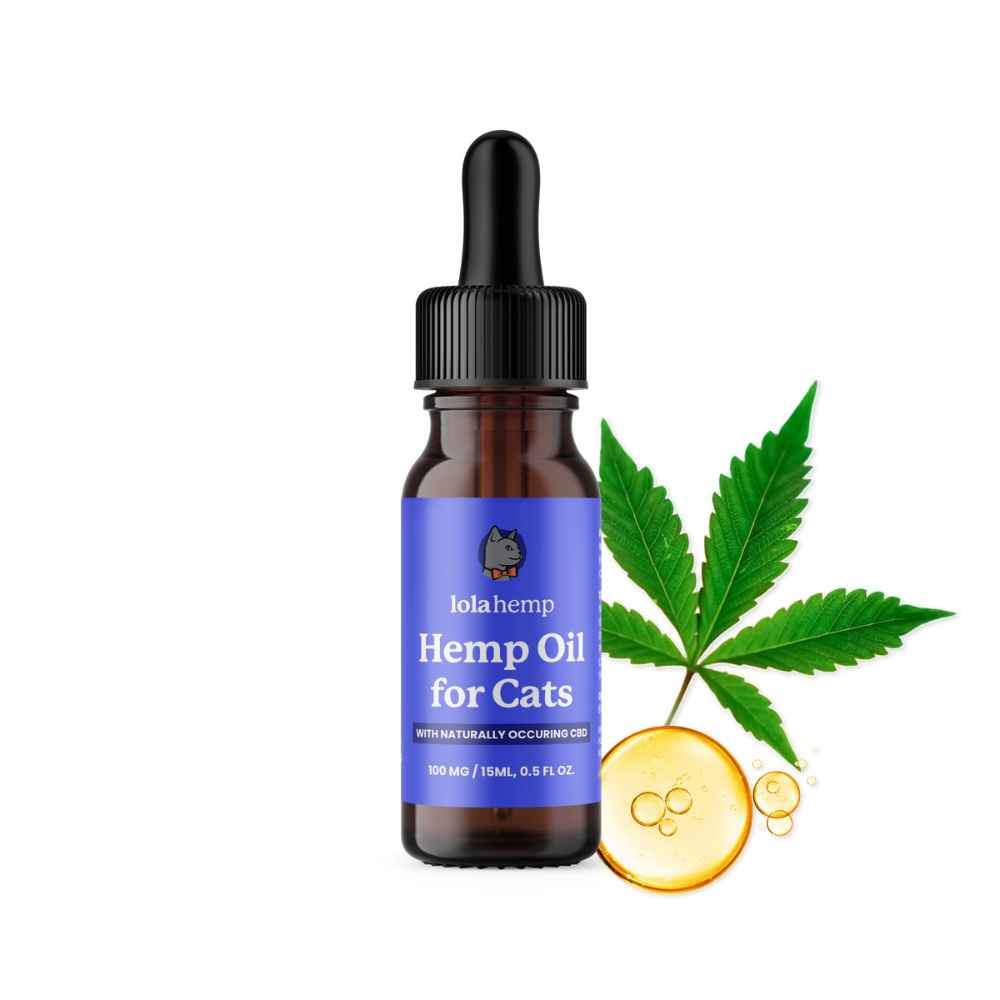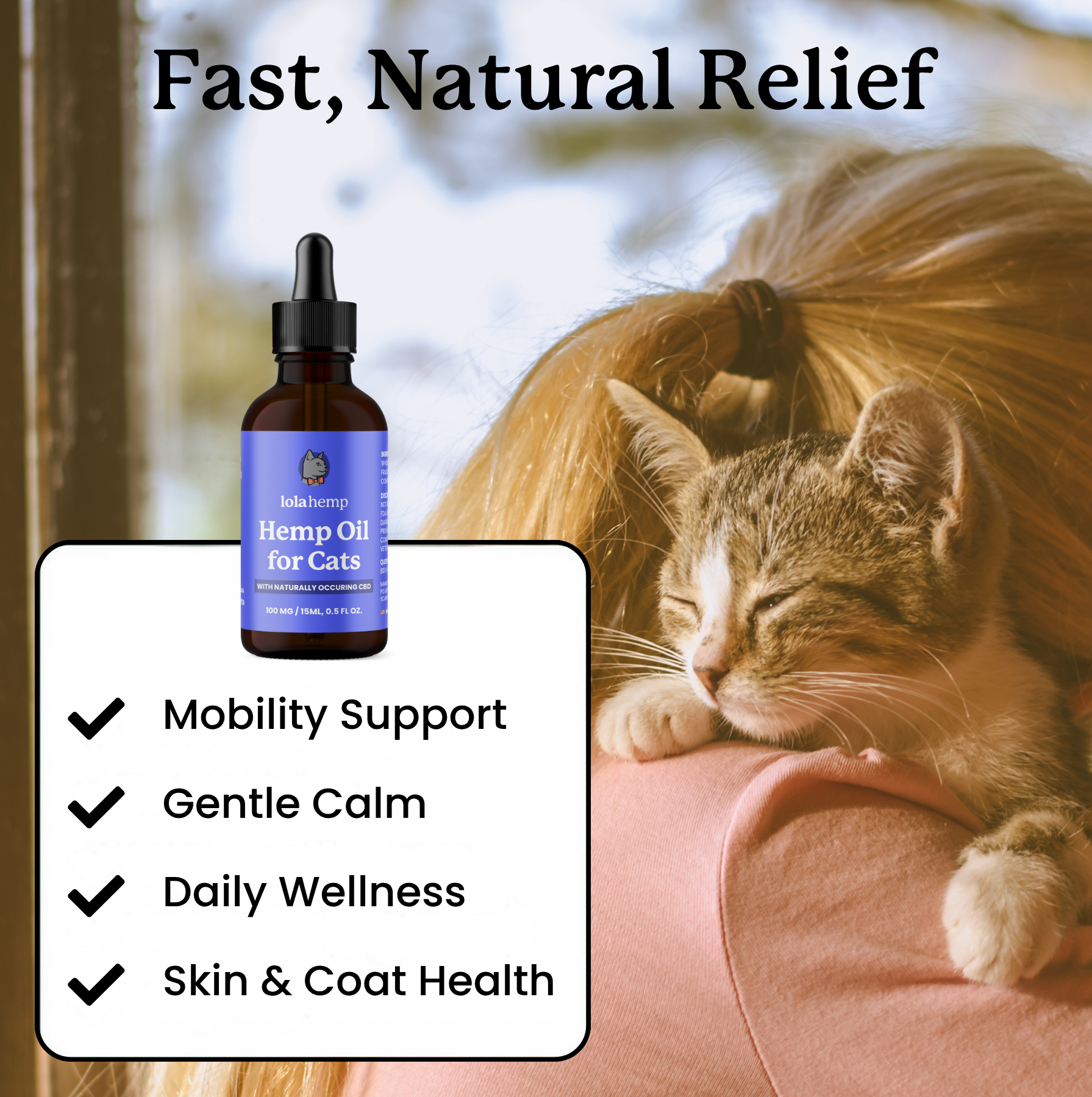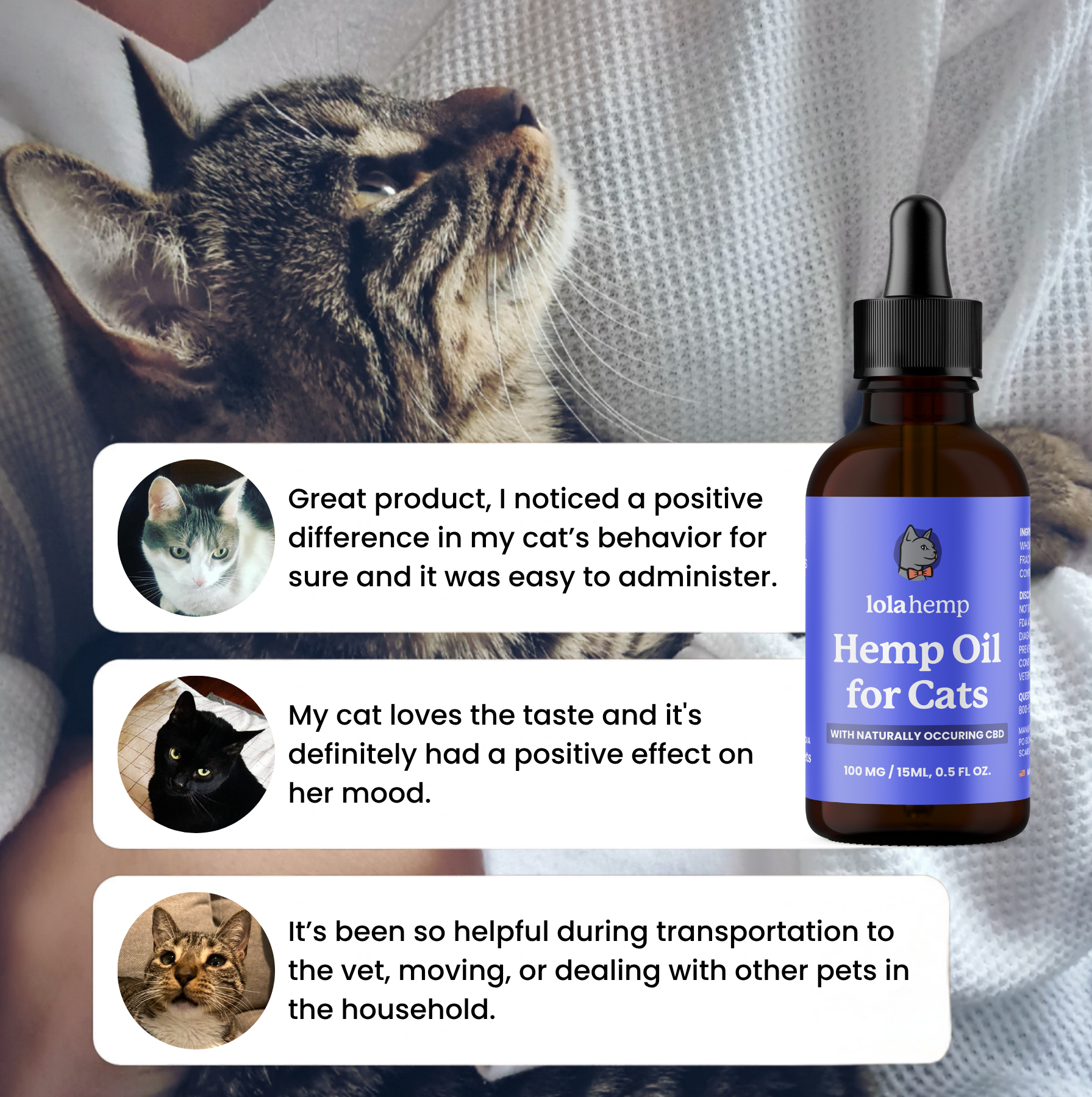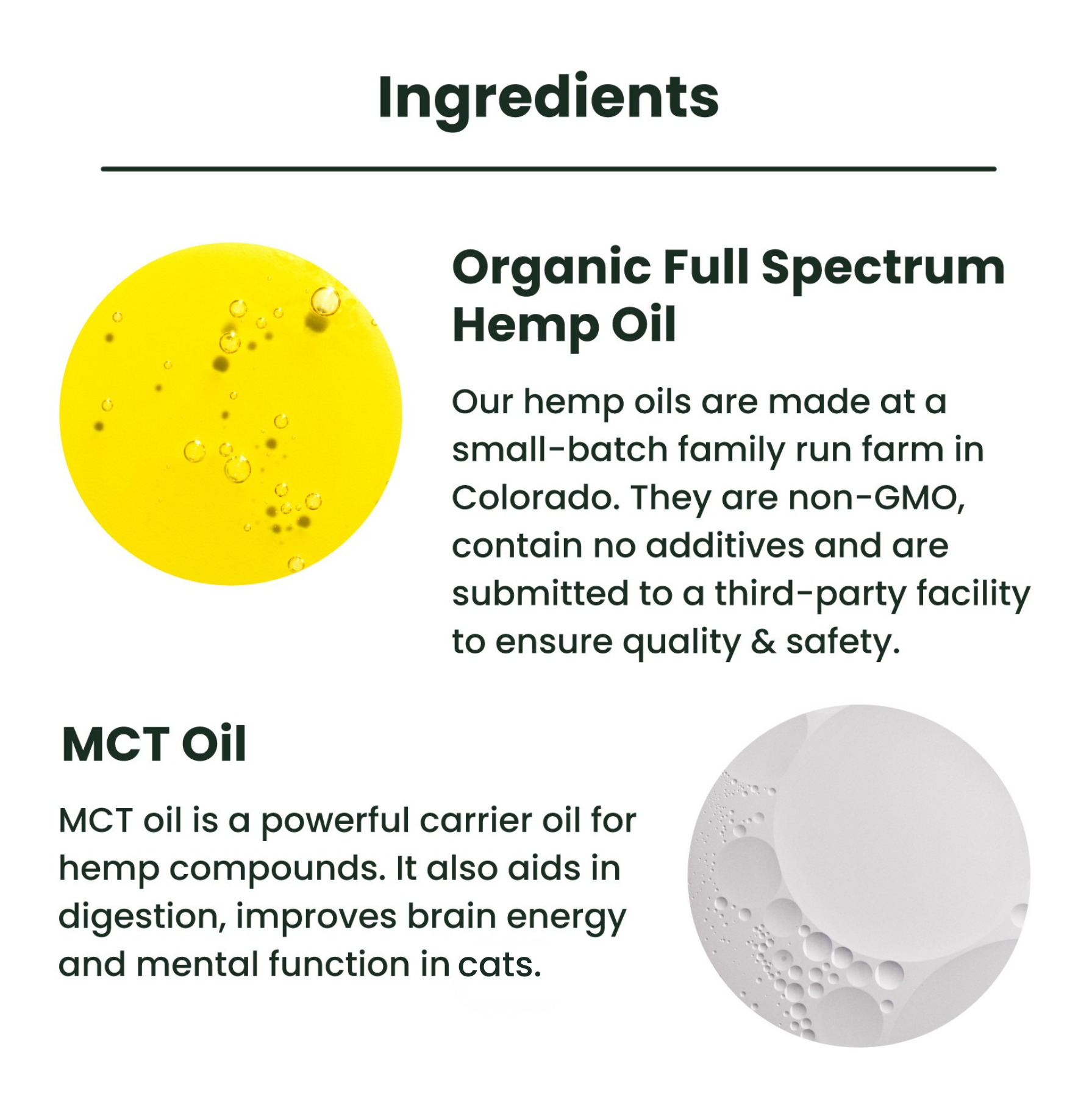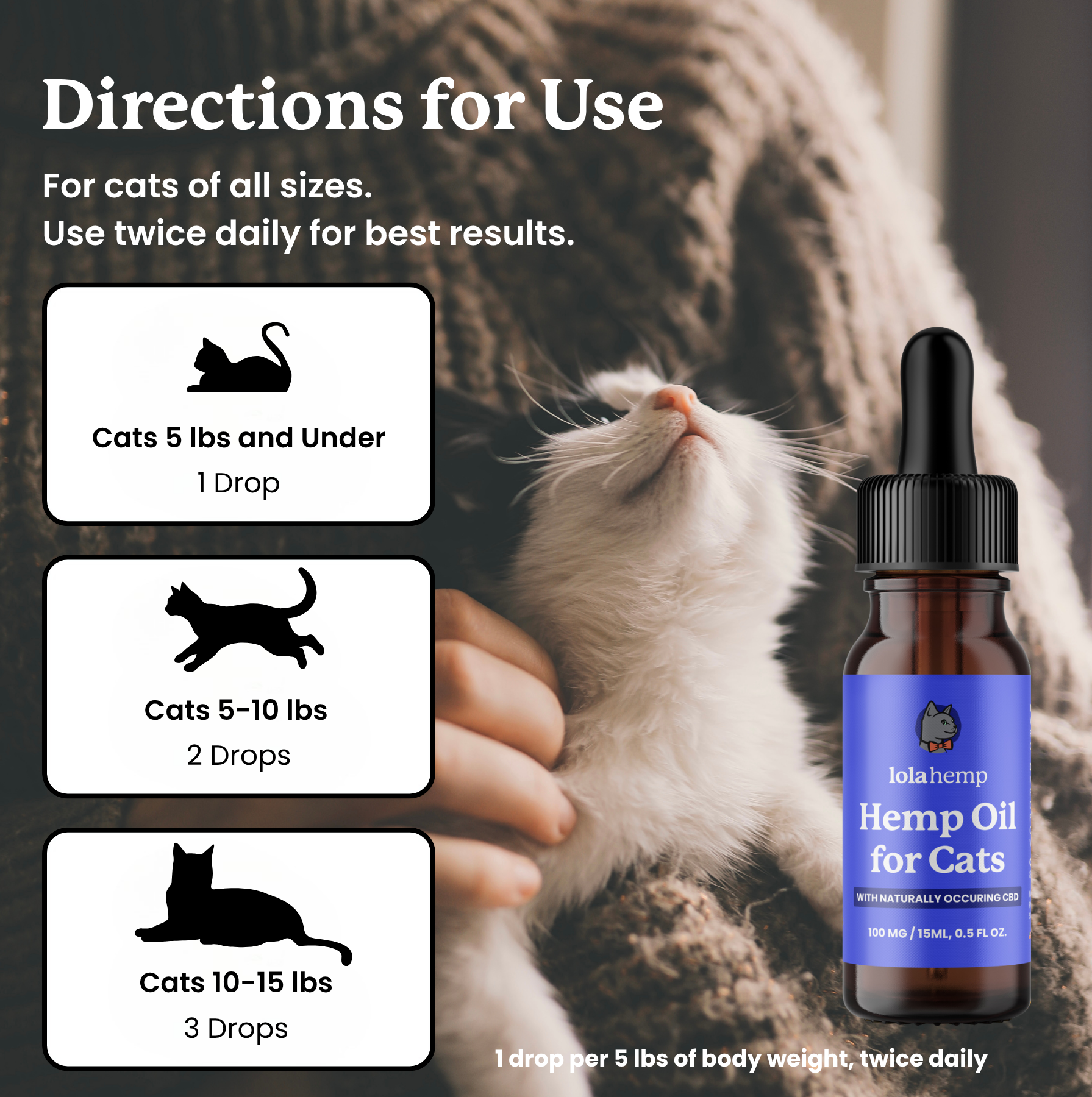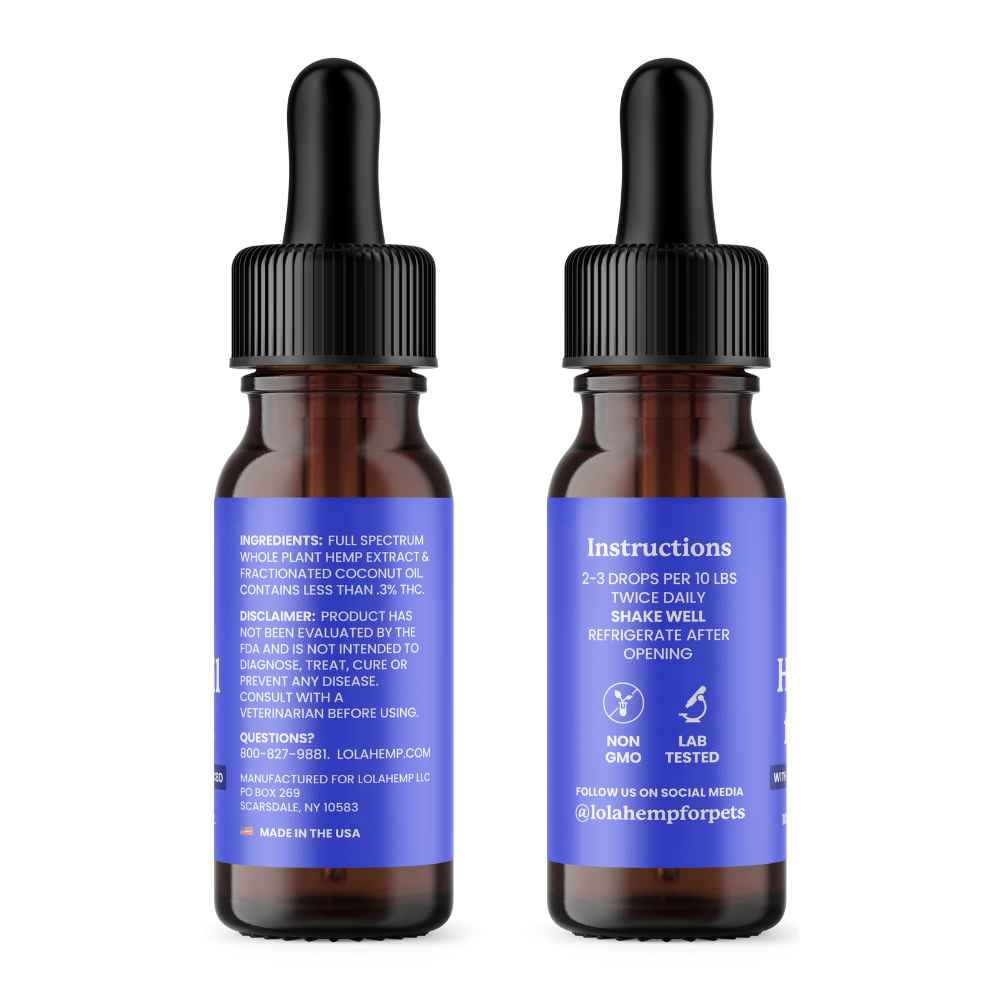If you're interested in finding CBD products for your cat, this guide offers a deeper look into each aspect of cannabidiol for our feline friends. Cats are known for their deep and sensitive emotions, their ability to move well into old age, and their equally impressive ability to hide their discomfort.
CBD offers the potential to help cats manage some of their physical or emotional discomfort with daily use. This article looks at the safety, dosage, and benefits of CBD for cats, giving you everything you need to know in order to make an informed purchase for your best friend.
So, could CBD help your cat feel better? Let's find out.
What are The Benefits of CBD for Cats?
Early research suggests that CBD may support cats in areas such as calming, occasional joint relief, and skin-related discomfort. While research on the use of CBD for cats is still evolving, studies on dogs provide promising insights that may be applicable to felines.
Let’s take a deeper look at each potential benefit:
1. Calming and Stress Support
Many cat owners turn to CBD to help with stress-related behaviors such as fear of loud noises, separation anxiety, or stress during travel. While clinical studies are still in early stages, anecdotal reports suggest that CBD may promote relaxation and overall well-being.
2. Joint and Mobility Support
As cats age, they may experience occasional joint stiffness or mobility issues. Early research on dogs and anecdotal reports suggest that CBD may support joint flexibility and comfort.
3. Seizure Support
Preliminary research on dogs suggests that CBD may help reduce seizure frequency. While similar studies on cats are ongoing, some cat owners have reported positive experiences using CBD to support their pets.
4. Skin and Allergy Relief
Skin irritation and allergies can be common concerns for cats. While studies have explored CBD’s potential in dogs, formal feline studies are needed. However, topical CBD products such as balms and ointments are increasingly popular for pet skin care.

How Does CBD for Cats Work?
Cats, like all mammals, have an endocannabinoid system (ECS) that helps regulate vital functions such as mood, pain perception, sleep, and immune responses. CBD interacts with ECS receptors to support overall balance and well-being.
How Do You Give CBD to Cats?
CBD products for cats come in several forms, including oils, chews, and topical balms. Many owners find oil easiest for precise dosing, although chews and topicals can be good alternatives depending on the issue.
How Long Does it Take for CBD to Work?
The onset of effects depends on the form and purpose. Calming effects may appear within 30–60 minutes, while mobility benefits often take several weeks of consistent use.
Is CBD Safe for Cats?
Research indicates that CBD is generally well tolerated in cats. However, consult your veterinarian before introducing CBD, especially if your cat is on other medications. Start with small doses and monitor closely.
What is the Best CBD Product for Cats?
The best CBD for cats is a full-spectrum hemp oil made with organic ingredients. Avoid products with unnecessary additives or isolates. Lolahemp CBD oil for cats is made with organic full-spectrum hemp extract and fractionated coconut oil, both safe for feline use.
Conclusion
CBD oil can support a cat's mobility and emotional health, while topical applications can also relieve discomfort from itchy or irritated skin. Discuss CBD use with your veterinarian, start slow, and monitor your cat’s response over 2–4 weeks.
Frequently Asked Questions About CBD for Cats
1. Is CBD safe for cats?
Yes, CBD is generally well tolerated in cats when used appropriately. Always consult your veterinarian before use and start with a low dosage to ensure your cat tolerates it well.
2. How long does it take for CBD to work in cats?
Calming effects may appear within 30–60 minutes, while joint or mobility support often takes several weeks of consistent use.
3. What type of CBD is best for cats?
Full-spectrum CBD oil made from organic hemp and free of additives is best. It offers a natural range of beneficial cannabinoids and is easy to measure by dosage.
4. Can I give my cat human CBD oil?
No. Human CBD oils may contain unsafe levels of THC or additives that are toxic to cats. Always use pet-formulated CBD products that are third-party tested.
5. What’s the correct CBD dosage for cats?
Dosage depends on your cat’s weight and the product concentration. Start small—just a few drops for smaller cats—and follow the manufacturer’s or vet’s guidelines.

